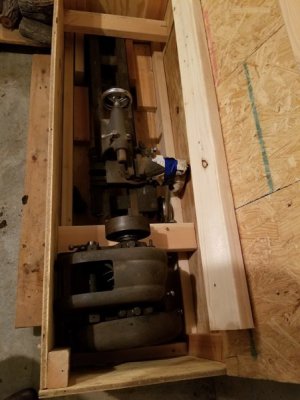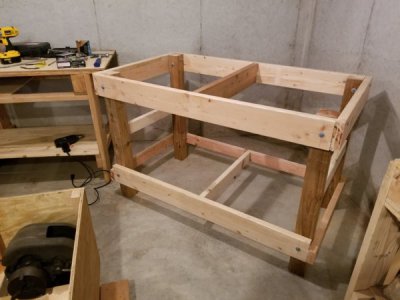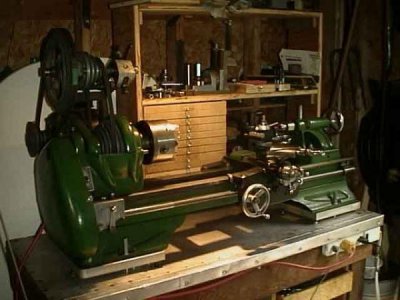- Joined
- Sep 14, 2016
- Messages
- 63
I am finally able to setup my Atlas 10 lathe, its been stored in a crate for several years due to some space issues and life in general. Trying to get the tool out and on its stand so I can begin cleaning it up and to use it. When I bought it, it was mounted to a cast iron lathe stand - is this original to this lathe? Iron legs and wood shelves, I assume it is but would it be better long term if I built a heavy workbench for the lathe instead? Also, I am trying to figure out how to get it from the crate/floor and onto the lathe stand its just heavy enough I don't think I can do it by myself? I may be able to get my son over to help but that's hit and miss, any ideas on the best way to move the lathe? It appears the lathe bolts down to the wooden top shelf and into the steel legs but the wood shelf is loose until you have the lathe bolted down, seems like a problem - anyone have any thoughts on best way to get started with this 1940's lathe?

Last edited:


